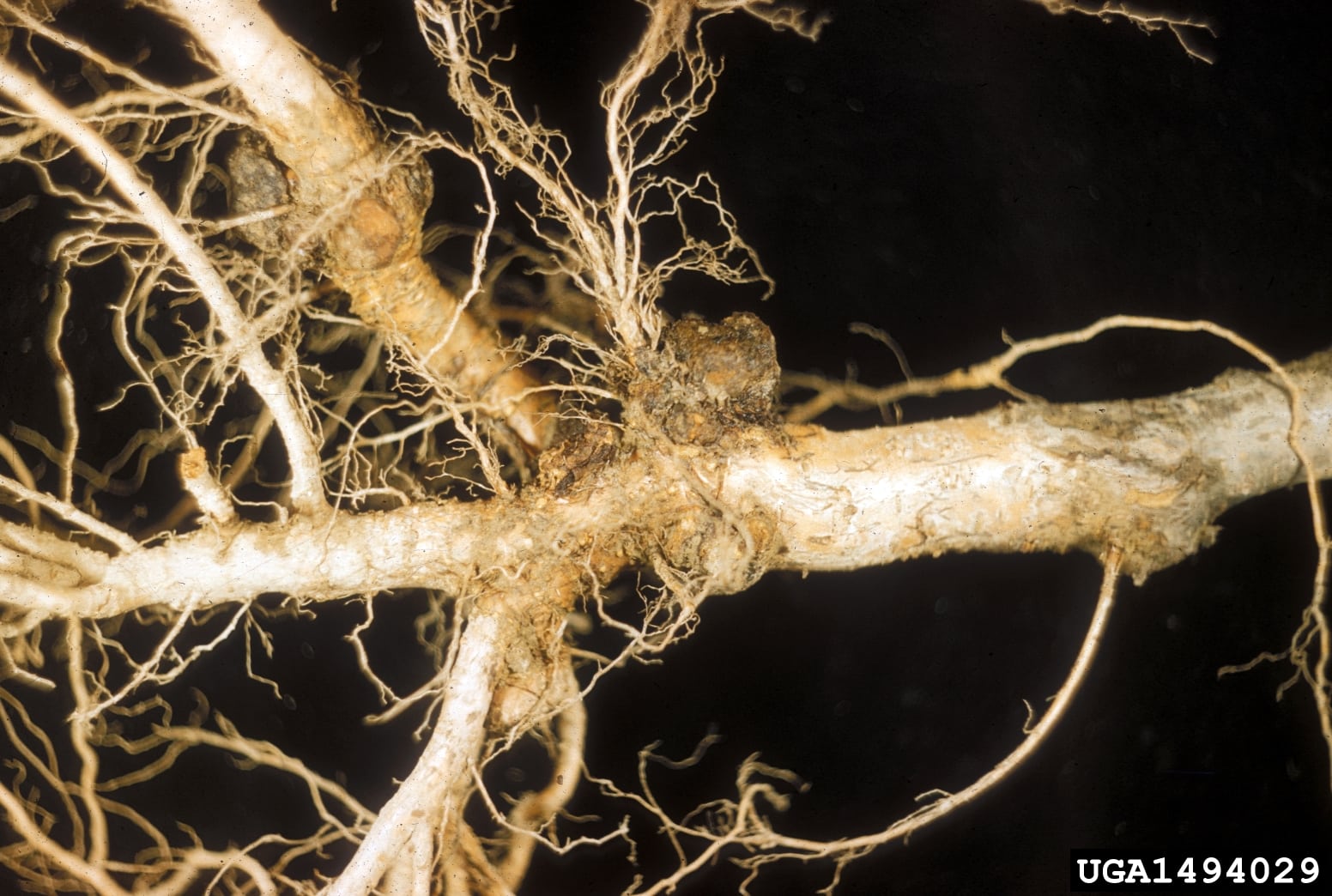What Is Pecan Crown Gall: Tips For Managing Pecan Crown Gall Disease

Pecans are gorgeous, large deciduous trees in the family Juglandaceae grown as shade trees and for their delicious edible seeds (nuts). Mighty as they may seem, they do have their share of maladies, one of which is crown gall on a pecan tree. What are the symptoms of a pecan tree with crown gall, and is there a way of preventing pecan crown gall? Read on to learn about pecan crown gall control.
What is Pecan Crown Gall?
Crown gall on a pecan tree is caused by a bacterial pathogen. It is found around the world and afflicts both woody and herbaceous plants belonging to over 142 genera within 61 separate families. Plants infected with crown gall become stunted and weak and more susceptible to winter injury and other disease. The bacterium infects the tree through wounds caused by insects, grafting and cultivation and may be confused with other growths caused by fungi, virus or other diseases.
Symptoms of a Pecan Tree with Crown Gall
The bacterium transforms normal plant cells into tumor cells that become wart-like growths, or galls. At first, these growths are white to flesh toned, soft and spongy. As they progress, these galls become corky, rough and dark in color. The growths appear on the trunk, crown and roots near the soil line and the branches on occasion. The tumor may decay and slough off while new tumor tissue develops in other areas of the same gall. Tumors develop again in the same places each year and secondary tumors also develop. The sloughed off tumors contain the bacterium, which is then reintroduced into the soil where it can survive in the soil for years. As the disease progresses, the tree weakens and leaves may turn yellow as the tumors interrupt the flow of water and nutrients. Severe galls can girdle the tree’s trunk, resulting in death. Infected trees are highly susceptible to winter injury and drought stress.
Pecan Crown Gall Control
Once the pecan is infected with crown gall, there is no method of control. Preventing pecan crown gall is the only control method. Only plant disease free, healthy trees and avoid damaging the tree. Biological control is available in the form of an antagonistic bacterium, A. radiobacter strain K84, but it can only be used preventatively since it has to be used on the roots of healthy trees prior to planting.
Sign up for the Gardening Know How newsletter today and receive a free copy of our e-book "How to Grow Delicious Tomatoes".

Amy Grant has been gardening for 30 years and writing for 15. A professional chef and caterer, Amy's area of expertise is culinary gardening.
